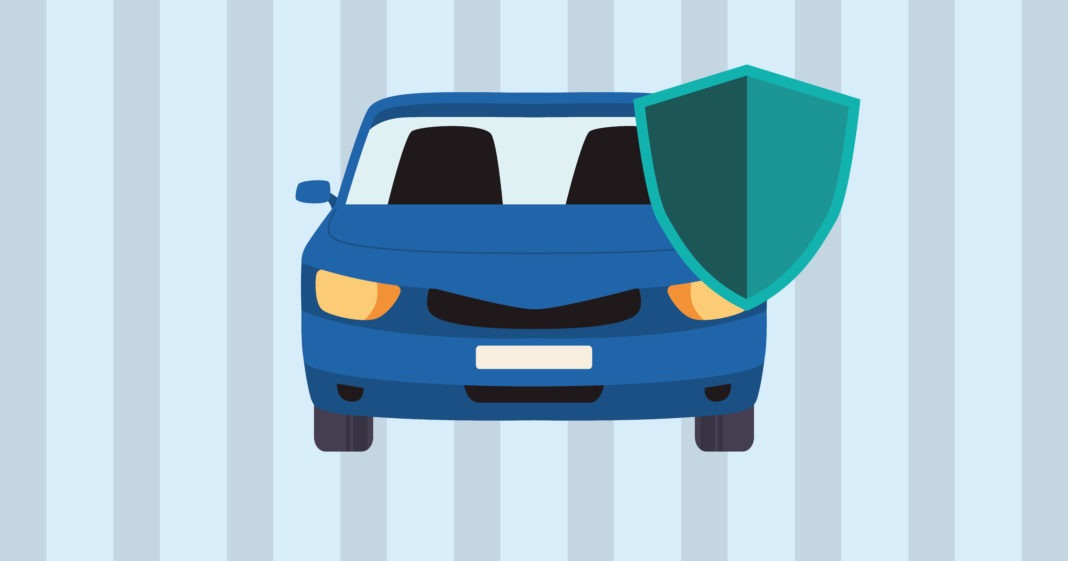Last Updated on May 24, 2023
The first time you set up a car insurance policy, it will most likely be for a learner driver insurance policy. When navigating the quote process, you may see jargon that you are not sure of. Especially if it is your first time setting up insurance! One thing that may cause some confusion is the levels of cover you can have on your vehicle.
Before setting up your insurance policy, it is good to know exactly what each of the levels of cover means, what they include, and which could be best for you! In this article we will be discussing the different levels of cover that you have available to you when setting up insurance. We’re here to help you prepare before going through with your purchase, to make the best choice for you!
Contents
Third party only cover
What is third party only cover?
Pros of third party only cover
Cons of third party only cover
Who is third party only cover suitable for?
Third party fire and theft cover
What is third party fire and theft cover?
Pros of third party fire and theft cover
Cons of third party fire and theft cover
Who is third party fire and theft cover cover suitable for?
Comprehensive cover
What is Comprehensive cover ?
Pros of Comprehensive cover
Cons of Comprehensive cover
Who is Comprehensive cover suitable for?
Addons for Learner Driver Insurance
Third Party Only Cover
What is third party only cover?
Third party only cover is the most basic and minimum legal requirement for car insurance in most countries. It covers damage caused by the insured driver to other vehicles, property or injury to other people. Third party only does not cover the insured vehicle or the driver. This is typically the cheapest type of car insurance.
If an accident occurs where the insured driver is at fault, third party only cover will pay out for the damage caused to the other person’s vehicle or property and any injuries sustained by the other person(s) involved. However, the insured driver will not be covered for any damage to the insured vehicle or injuries sustained with third party only cover.

Pros of third party only cover
Cost-effective: Third party only cover is typically the cheapest type of car insurance policy available, making it an affordable option for drivers on a budget.
Legal requirement: Having at least this level of cover is essential if you want to drive legally on public roads.
Protect others: Third party only cover provides protection for damage caused by the insured driver to other people’s vehicles, property, or injuries.
Cons of third party only cover:
Limited protection: This policy only covers damage caused to other people and their property. It won’t cover damage to your own car, or any injuries sustained by you.
No protection against theft or fire: This policy does not provide any protection against theft or fire damage to your vehicle.
No add-ons: There are no additional benefits or add-ons included with this type of policy. So, you won’t have any extras such as breakdown cover or personal accident cover.
Higher costs in long-term: It can result in being more expensive long-term. This is because if you’re involved in an accident you will be liable for any damage to your own car.
Who is third party only cover suitable for?
Overall, third party only cover can be a good option for drivers who are looking for the minimum legal requirement, or want to keep costs low. However, it’s important to carefully consider your needs and circumstances before deciding as to whether this level of cover is suitable for you.
Third Party, Fire and Theft Cover
What is third party, fire and theft cover?
Third party, fire and theft cover is a type of car insurance that provides more coverage than third party only. It covers damage caused by the insured driver to other people’s vehicles or property, and any injuries sustained by them. Along with cover for the insured vehicle against fire damage or theft.
If the insured vehicle is stolen or damaged due to fire, this type of policy can provide financial compensation for the repairs or the value of the vehicle. However, it will not cover damage caused by the insured driver in an accident.
Third party, fire and theft cover is often considered a mid-level insurance option, offering a balance between affordability and coverage. It can be a good option for drivers with a car that is worth protecting against theft or fire damage.

Pros of third party, fire and theft cover
Additional protection: This policy offers more coverage than third party only cover. As you are protected against fire and theft. This can provide peace of mind for drivers who want to protect their car.
Affordable: Third party, fire and theft cover is generally more affordable than comprehensive cover. This makes it a good option for drivers who want more coverage than third party only cover, but without the higher premiums of comprehensive cover.
Lower costs: If the insured vehicle is stolen or damaged due to fire, this type of policy can save drivers from paying for expensive repairs or replacement costs. This can be more cost-effective in the long-term.
Cons of third party, fire and theft cover:
Limited protection: This policy only covers damage caused by the insured driver to other persons vehicles, property, or injuries, as well as fire damage or theft to the insured vehicle. It does not cover any other types of damage, such as accidental damage or damage caused by severe weather.
No add-ons: There are no additional benefits or add-ons included with this type of policy. So, drivers won’t have extras like breakdown cover or personal accident cover.
Higher premiums: This policy can be more expensive than third party only cover. Premiums may vary depending on the value of the insured vehicle, age of the driver, and location.
Who is Third Party, Fire and Theft suitable for?
Overall, third party, fire and theft cover can be a good option for drivers who want more protection than third party only cover but don’t want to pay for comprehensive cover. However, it is important to consider the limitations of the policy and ensure it meets your individual needs and circumstances before deciding.
Comprehensive Cover
What is Comprehensive cover?
Comprehensive cover is a type of car insurance policy that offers the highest level of protection. It covers damage caused by the insured driver. This can be to other people’s vehicles, property, or injuries. It will also cover any damage sustained by the insured vehicle, regardless of who is at fault.
Comprehensive cover also offers protection against other risks such as theft, fire, vandalism, and damage caused by severe weather conditions like floods, hailstorms, or hurricanes.
This type of policy typically includes additional benefits or add-ons such as personal accident cover, breakdown cover, and windscreen cover.
Comprehensive cover can often be the most expensive type of car insurance policy due to its extensive coverage. However, it offers drivers the most comprehensive protection against any potential risks or damage to their vehicle.

Pros of comprehensive cover:
Extensive protection: Comprehensive cover offers the highest level of protection.
Additional benefits: Comprehensive cover typically includes additional benefits or add-ons such as personal accident cover, breakdown cover, and windscreen cover. They can provide further protection and peace of mind.
Higher payouts: If the insured vehicle is written off or stolen, comprehensive cover provides higher payouts than third party only or third party, fire and theft cover. This can help with replacement costs.
Flexibility: Comprehensive cover can be tailored to suit the driver’s individual needs and budget. As you can choose different levels of excess, optional extras, and coverage limits.
Cons of comprehensive cover:
Higher premiums: Comprehensive cover is the most expensive type of car insurance policy due to its extensive coverage.
Not for everyone: For drivers with an older or less valuable car, comprehensive cover may not be cost-effective, as the cost may exceed the actual value of the vehicle.
Limited coverage for personal items: Comprehensive cover may not cover personal items stolen from the vehicle. So drivers should check the policy carefully to see what is covered.
Excess costs: If the driver needs to make a claim, they may need to pay an excess fee, which can be expensive.
Who is Comprehensive cover suitable for?
Overall, Comprehensive cover offers the most extensive protection and peace of mind for drivers, but it can come at a higher cost. It’s important for drivers to carefully consider their needs and circumstances before choosing this type of policy.
Add-ons for Learner Driver Insurance
Personal accident cover
Personal accident cover is an optional add-on that can be included in a car insurance policy. It provides financial protection for the policyholder and passengers in the event of an accident that results in injuries, disability or death.
If the policyholder or passengers sustain injuries or are killed in an accident, personal accident cover will provide a payment. This may be a lump sum payment or a weekly payment for a set period. It is given to cover medical expenses, lost income or other expenses.
Breakdown cover
Breakdown cover is an optional add-on that can be included in a car insurance policy or purchased separately from a provider. It provides assistance and support in the event of a breakdown or failure.
If the insured vehicle breaks down or won’t start, the breakdown cover provider will typically send out a specialist to try to fix the problem at the roadside. If the vehicle cannot be repaired, the provider may arrange for it to be towed to a nearby garage for repairs. Although this can depend on the level of breakdown cover.
Breakdown cover can also include additional benefits, such as roadside assistance, recovery services, and onward travel options. Which can help drivers continue their journey or get home safely.
Excess protection
Excess protection is an optional add-on that can be included in a car insurance policy. It provides financial protection for the policyholder in the event of a claim where the excess amount applies.
When making a claim on a car insurance policy, the policyholder is typically required to pay an excess amount, which is the amount they have agreed to pay towards the cost of any claim. The excess amount can vary depending on the policy and the level of cover chosen.
With excess protection, the policyholder can reclaim the excess amount paid if they are involved in an accident that is not their fault or where the at-fault driver cannot be identified.
Windscreen cover
Windscreen cover is an optional add-on that provides financial protection in the event of damage to the insured vehicle’s windscreen or other glass components.
Typically, Windscreen cover will provide coverage for the repair or replacement of the affected part. The amount of coverage will depend on the level of cover chosen and the policy terms and conditions.
Windscreen cover can also include additional benefits. This could include cover for the cost of a replacement vehicle while the repairs are being carried out, or coverage for the cost of towing the vehicle to a repair shop.
Conclusion
In conclusion, when setting up a learner driver insurance policy, it is important to know the different levels of cover available to you. This allows you to make an informed decision about what will be best for you and your car! When you are setting up an insurance policy be sure to ask questions and find out about add-ons.
You have options available to you with third party only, third party fire and theft and comprehensive levels of cover. Which all have different features and protection for your vehicle.









